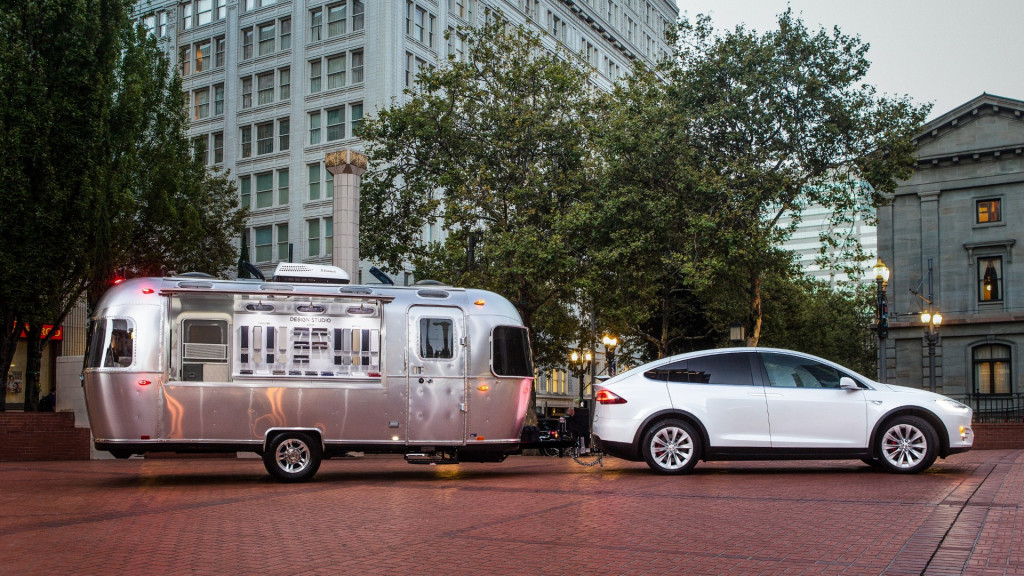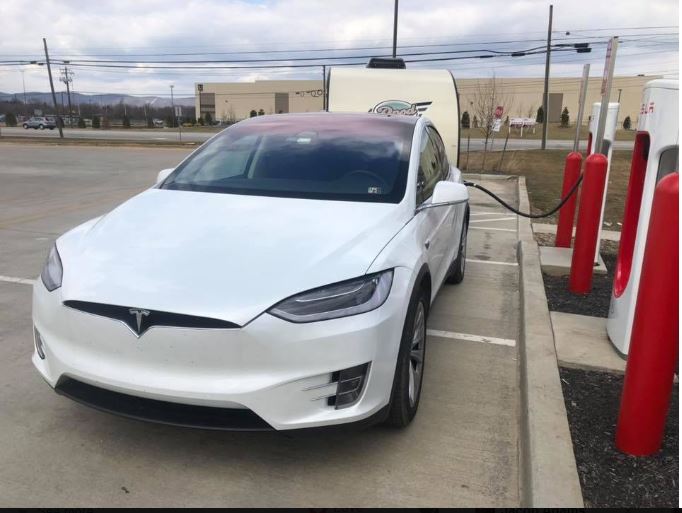The Polestar 2 electric crossover may be one of the first compact electric cars to be rated for towing any significant amount.
Polestar announced a 3,300-pound tow rating for the upcoming model Wednesday, along with an optional power-folding towbar for flexibility. The company confirmed to Green Car Reports that U.S. versions of the Polestar 2 will have the same capability.
The model, which is due to go on sale in June 2020, will also get its first deliveries in the U.S. at the same time as Europe.
None of the smaller electric cars, like the Nissan Leaf, Chevrolet Bolt EV, or Kia Niro EV, for instance, have actual manufacturer-endorsed towing capacity in their U.S.-market editions.

Tesla Model X towing
Among larger electric crossovers, the Tesla Model X is rated to tow 5,000 pounds, and the Audi E-Tron can tow 4,000 pounds.
The Polestar 2 is hard to classify. From some angles the notchback rear tricks you into thinking it’s a blocky sedan, but it’s actually a hatchback; and once you’re beside the 2 it becomes more obvious that it’s more aptly described as a low-set crossover.

Polestar 2 towing
Polestar emphasizes flexibility and a modern lifestyle, and says: “Polestar 2 was designed from the outset with this philosophy, which includes useful towing ability and easy access to rear luggage space.”
Electric vehicles have the potential to be short-distance towing aces. Electric motors have one of the characteristics that truck makers tend to brag about in their towing-focused internal-combustion models: a whole lot of torque, available pretty much from a standing start.
We know that even those EVs with decent tow ratings aren’t all that good at the task—due to some physics that those developing electric trucks will have to contend with.

2018 Tesla Model X towing R-Pod 180 and charging at Supercharger in Carlisle, Pennsylvania
What’s missing from the towing equation? Simply put, energy. As Green Car Reports underscored back in April, with a trip roundup from a very patient couple that had towed a 3,800 pound camper 7,700 miles with their Model X P100D on a 45-day trek around the Southeastern U.S. With what sounds like gentler driving and slower speeds than they might have maintained in a gasoline or diesel vehicle, they still only averaged 600 to 1,200 watt-hours per mile, depending on the terrain and conditions—or 150 miles per full charge on a good day.
A recent Engineering Explained video [below] does a good job of explaining why. Spoiler alert: An internal-combustion truck stores so much energy in its fuel tank, compared to what an electric car keeps in its battery pack, that it doesn’t matter nearly as much if the gas truck uses twice the energy when towing.
For the Polestar 2, that might not matter. To us, 3,300 pounds sounds like a sweet spot that’s enough weight for a trailer with a couple of ATVs or snowmobiles, a utility trailer good for a trip for materials or a load to the dump, or even a small travel trailer. Just don’t think cross-country trip.












